

Brains in Pain Cannot Learn! Educators want nothing more than for our students to feel successful and excited to learn, and to understand the importance of their education.
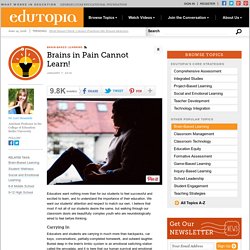
We want our students' attention and respect to match our own. I believe that most if not all of our students desire the same, but walking through our classroom doors are beautifully complex youth who are neurobiologically wired to feel before thinking. Carrying In Educators and students are carrying in much more than backpacks, car keys, conversations, partially-completed homework, and outward laughter. Buried deep in the brain's limbic system is an emotional switching station called the amygdala, and it is here that our human survival and emotional messages are subconsciously prioritized and learned.
Over 29 percent of young people in the U.S., ages 9-17, are affected by anxiety and depression disorders (PDF). Trauma and the Brain. Computer Coding Game No Computer Needed Superhero Activity. A computer coding game is a really fun way to introduce the basic concept of computer coding to young kids.
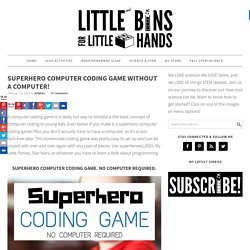
Lessons. 27 Ways To Inspire Innovative Thinking In Students. 27 Ways To Inspire Innovative Thinking In Students by TeachThought Staff Innovating thinking is one of those awkward concepts in education–one that is often espoused, but isn’t measured, reported on, trained around, or celebrated.

It’s just sort of there. Innovative thinking in students will flower when we design classrooms that absolutely can’t survive without it. Same with critical thinking, self-direction, creativity, and so on. The following graphic by Mia MacMeekin offers 27 ways to think about this idea. On the other hand, “Solve: Solve a simple problem every day,” “Try: Try lots of (new) ways”, “Risk: Take risks”, as well as Change, Challenge, Draw, Share, and Dream all can be simple but effective strategies to force new thinking on to students, or from students. Check out the full graphic below, and add any suggestions in the comments below, if you’d be so kind. 27 Ways To Inspire Innovative Thinking In Students; image attribution miamackmeekin vbia anethicalisland.wordpress.com. 16 Things Teachers Should Try in 2016 [infographic] Quick List STEM Resources For The Classroom. This post is sponsored by Samsung.
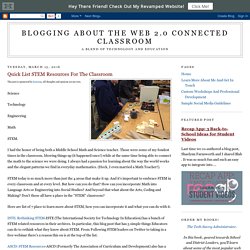
All thoughts and opinions are my own. Science Technology Engineering Math I had the honor of being both a Middle School Math and Science teacher. 5-Minute Film Festival: 10 Great Video Resources for Teaching Math. With Pi Day coming up, we wanted to shout out to all the amazing YouTube creators who are making math videos!

(Of course, if it's Pi Day videos you want, check out our "Hooray for Pi Day" post.) Math may not seem like a natural fit for the visually-driven medium of video -- but you'd be amazed by the creativity of some of these creators who bring the complexities of all levels of math to life on the small screen. Math teachers, this one's for you! Video Playlist: Best YouTube Channels for Math Teachers Watch the player below to see the whole playlist, or view it on YouTube. Writing Storytelling tools. Five Things Students Want Their Teachers to Know about Online Learning. Kids love having the opportunity to learn online but it’s not merely the medium or the technology that students enjoy.
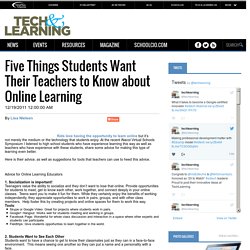
Game-Based Learning & Simulations. Growing a Community to Build a Garden. When Walter Bracken STEAM Academy Elementary School began its gardening program 15 years ago with one small area, we immediately saw the excitement and benefit for the students.
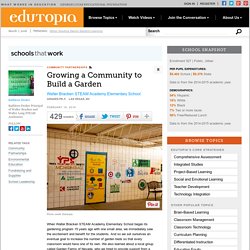
And so we set ourselves an eventual goal to increase the number of garden beds so that every classroom would have one of its own. We also learned about a local group called Garden Farms of Nevada, who we hired to provide support from a gardener. This really helped us ensure schoolwide consistency with our program. As a side benefit of creating gardens, we also conserved water through grass replacement. This created a win-win program for our school. 64 Sites for Digital Storytelling Tools and Information. Big Universe- for younger childrenBlurb- prices start at $10.95 (small book) discounts on quantity orders Bookemon BoomWriter- students write a book together; class gets one free copy (free shipping) ClassikTV- create a movie by adding subtitles to old movie scenes Creaza- suite of creative tools, including cartoonist, movie editor, audio editor and mindmaps DigiTales- create 3-5 minute stories from these types: living memories, beyond words, itza wrap Do Ink- create Flash-style animations using a "simple and friendly vector editor Domo Animate- free animation website offers characters with dialogue, backdrops and special effects Glogster- drag and drop text, images, audio, video drawings and more; premium edition has no ads.
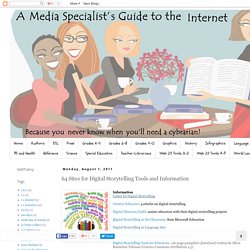
Learning with 'e's: Constructing learning in the digital age. In a sense, an algorithm has much in common with a schema, particularly because both have rules and sequences of instruction that can be followed to achieve a specific goal.
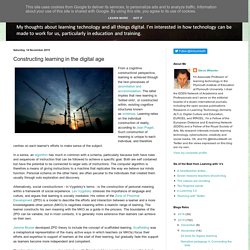
Both are self contained but have the potential to be connected to larger sets of instructions. The computer algorithm is therefore a means of giving instructions to a machine that replicates the way we believe our minds function. Personal schema on the other hand, are often peculiar to the individuals that created them usually through solo exploration and discovery. Alternatively, social constructivism - in Vygotsky's terms - is the construction of personal meaning within a framework of social experience. Lev Vygotsky stresses the importance of language and culture, and argues that learning is socially mediated. Jerome Bruner developed ZPD theory to include the concept of scaffolded learning.